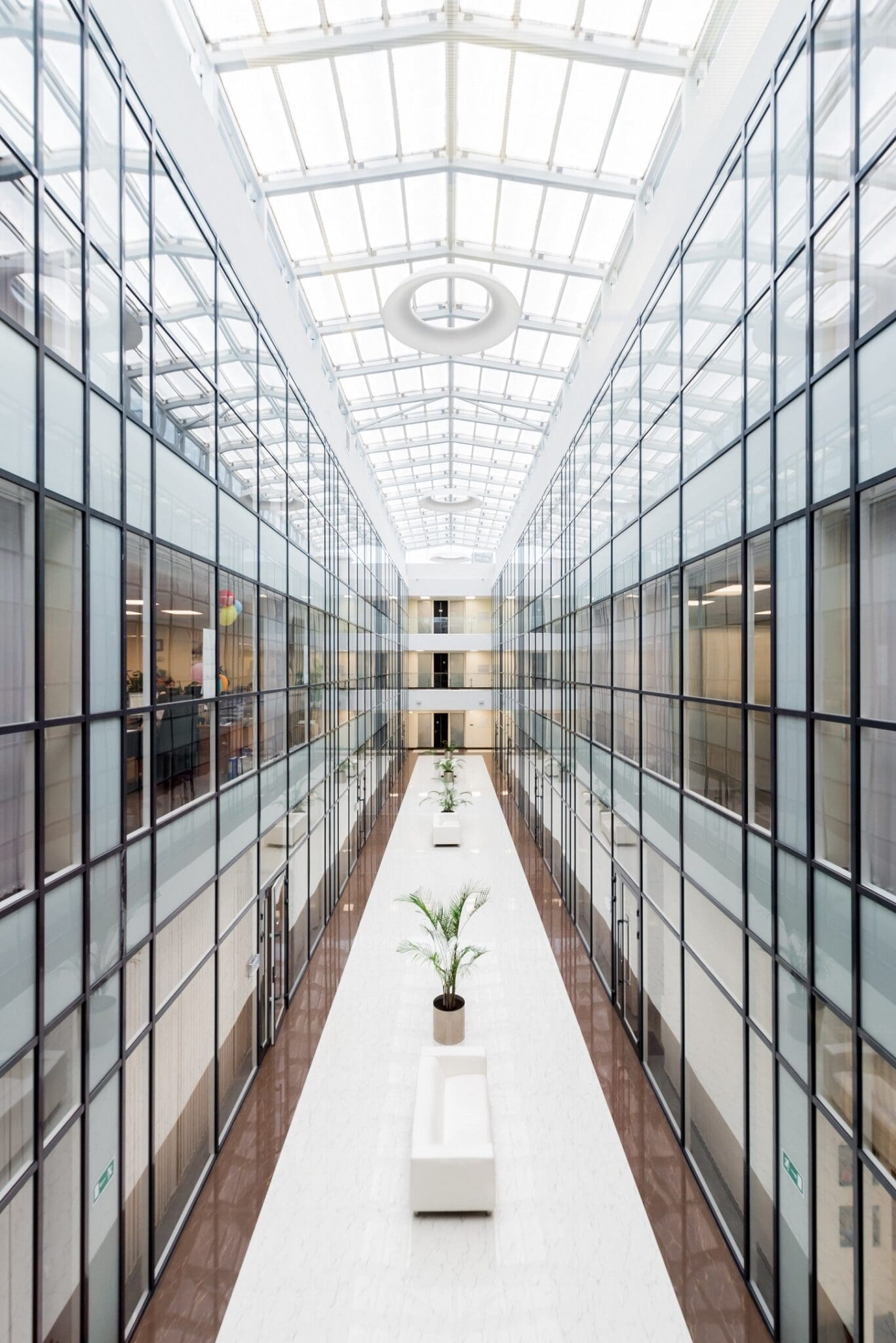The environments we work in have a profound effect on the way we work as well as our health. Companies around the world are increasingly concerned with making sure that sites not only operate productively and efficiently, but also promote healthy and safe working practices. For example, 56% of companies in our BuildingConfidence community actively limit the amount of hours people can work. Wellbeing is the idea that happy and healthy workers tend to be more productive. Working environments that support the physical, mental and emotional health of the people that spend their time there, perform better.
Wellness can be promoted in the way that facilities are built, managed and upgraded. But it can also form an important part of the way supply chains work by setting standards, preventing accidents and increasing productivity.
Healthy, safe and productive
Promoting wellbeing means meeting the physical and non-physical needs of your employees or subcontractors in a functional way. On a basic level, you need to be able to ensure that you provide comfort, air quality, good lighting, adequate heating and a high level of personal safety. If you fail to meet these basic needs, you risk becoming a victim of presenteeism and absenteeism.
Presenteeism occurs when an employee is physically present at work but is incapable of performing at the level required. This could be due to poor lighting or uncomfortable working conditions, but it can also be caused by stress, anxiety and too heavy a workload. Over all the industries we monitor, the frequency of injuries to both employees and contractors has dropped over the last 35 years as health and safety practices continue to improve.
The effect that people’s mental state can have on their performance is another aspect of promoting wellness. Sources of natural light can make office-bound workers happier, while promoting and educating workers on health and safety can reduce stress for those that work in potentially dangerous environments.
Promoting wellness
Wellbeing is a topic that touches almost every aspect of a business, from the place that your employees spend their time to the way they actually work on a day to day basis. Importantly, there is not one set process that can be ticked off methodically to achieve wellbeing. Rather, it is an ongoing process of evaluation and evolution.
Designing Space
Incorporating wellbeing into building design means expanding your thinking from what activities a space is capable of housing to include the impact it has on the people that work there.
Making sure there is enough natural light and clean air and providing spaces for people to relax are prime examples of promoting wellness through building design.
The WELL Building Standard was launched in 2014, and looks to provide construction companies and facilities management professionals with the resources needed to best promote the health of their workforces and the wider environment.
Facilities management
The job of facilities managers is so much more than keeping the plumbing working. It becomes one of monitoring worker sentiment and finding opportunities to make improvements if necessary. A key element of wellness is listening to people – you cannot enforce wellbeing from the top down.
Technology can play an important part in facilities management. Sensors placed on boilers and air conditioning units can monitor performance and call out the right kind of engineer in the event of failure, before the working environment becomes uncomfortable. Automated solutions (grouped together under ‘computer aided facilities management’) can also be used to objectively monitor occupancy and activity data throughout the building, meaning that under-used rooms or areas don’t stand idle for long.
Supply chains
Ensuring the sites and facilities you operate are safe and promote wellness is one thing, but your company doesn’t work in isolation. As part of a supply chain, the choices you make regarding health, wellness and safety can have far-reaching effects. Avoidable workplace accidents can create frustrating delays and add extra costs. And a workforce of people unable to work at their best will lead to less productivity, lower quality and worse relationships.
For suppliers, presenteeism can impact your performance compared to competitors, making you a less attractive proposition to buyers. It can also lead to inefficiencies creeping into your processes and affecting your costs, as well as your decision making. Buyers need to know that the suppliers they work with share their commitment to safety and wellbeing and work to the highest standards. Our figures show that only 30% of service suppliers currently have a fully documented health and safety management system in place to support this.
Our communities help buyers and suppliers know they are working from the same page. Our audits and questionnaires provide independent verification of suppliers’ health and safety standards. This makes it easier to ensure wellbeing, both in terms of facilities management and working practices, throughout supply chains.
Happy and healthy workers are more motivated, create better relationships and do better work. Placing wellness at the top of your agenda does not just benefit your own workforce, it can also have a substantial positive impact throughout your supply chain.


